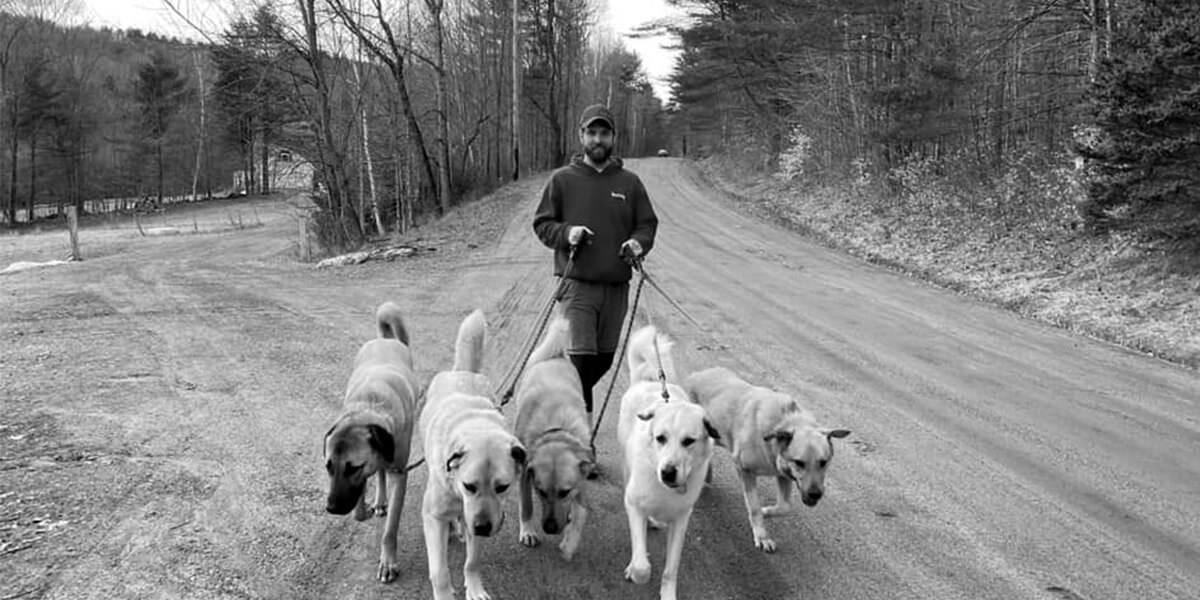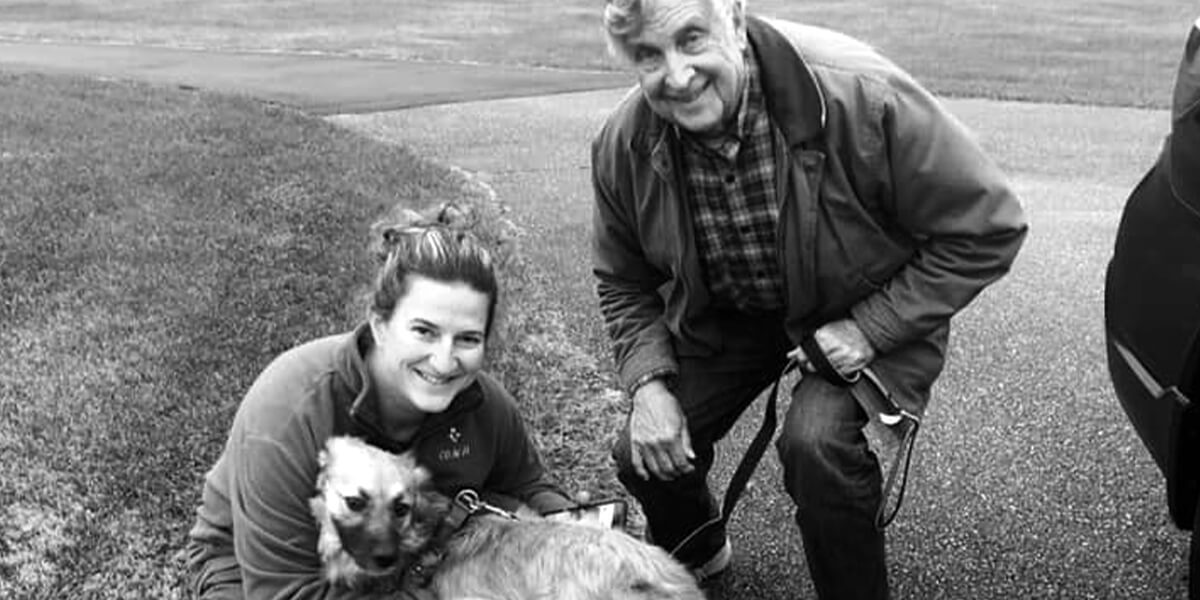rwb foster program
We truly appreciate your interest in fostering one of our landfill dogs for Rescuers Without Borders! With the help of you opening your home to our foster, you are saving more lives and providing our dogs with the love and home life they deserve!
What you should know
Once you have completed the foster application, one of our foster coordinators will get in touch with you to discuss the dogs we currently need fosters homes for. During this conversation we will learn what type of dog (age, breed, size, etc.) would work best in your home, as well as ensure that our dogs go to the correct home.
Our foster homes are asked to provide love and care for our dogs, as well as transportation to any veterinary appointment when needed, and transportation to any adoption events if we have one scheduled for your area. General care we ask you to provide our fosters includes, feeding them according to the diet they need, exercise them with walks and outdoor time, lots of love and play time, assistance with training if needed and of course positive socialization with other animals.
Fostering is an extremely rewarding experience and by you participating in our foster program, you are saving a life and giving a dog the 2ndchance they desperately need!
Some of the most frequently asked questions we receive about fostering are found below.
The dogs who are in need of foster care come to us from two different situations:
Turkish Rescues. At Rescuers Without Borders, we make a lifetime commitment to every animal we rescue. We pull the dogs from the Landfill or streets of Turkey and eventually they fly here to the US.
As with any dog we save, it means for any reason, an adopter can no longer keep a pet he or she adopted from us, we require that the pet comes back to Rescuers Without Borders. If the pet ends up at a shelter, we will pick the animal up and take the animal back.
Shelter rescue. Rescuers Without Borders also takes in animals from high kill shelters in Texas as well as dogs dumped in the streets of Texas. Our adoption and rescue program in Odessa TX is small and focuses specifically on dogs who need us the most. We want to save as many lives as possible, and the foster program allows us to maximize our resources.
A healthy and safe environment for their foster dogs. Transportation to and from the vet appointments as needed. Socialization and cuddle time to help teach dogs positive family and pet relationships.
Lots of exercise and positive stimulation to help them develop into great dogs.
As much time as you can. With that said, the amount of time will vary depending on the energy level and needs of the dog you are fostering. It is ideal to spend around two hours a day exercising and playing with your foster dog to ensure that he or she receives adequate socialization and stimulation.
Yes. The foster application is designed as a survey to help our Directors match you with the best animal for your needs and your current work/family schedule. If you have a full-time job, one of our Directors will match you with a dog who may be OK alone during your work hours. However you would still need to provide ample exercise before or after your work schedule.
We do require a fenced in yard in order to foster one of our dogs. This is for the safety and well-being of our dogs.
Ideally, foster dogs stay in their foster homes until they get adopted. While we do have a boarding location at The Yamac House, it is for medical or behavioral dogs, so our dogs rely on foster homes as their home between homes.
Yes, however we have a few guidelines that we ask foster families to adhere to regarding their personal pets. We advise that you consult with your veterinarian before fostering to ensure that all of your personal pets are healthy and up-to-date on all vaccines. We also require proof that your pet is up-to-date. Dogs are very susceptible to illness and can carry or catch different diseases. If, for any reason, your personal pet becomes ill while you are fostering a Rescuers Without Borders pet, we cannot provide medical care for your personal pet.
If you want to adopt a foster dog, you will need to complete an adoption application and follow the full adoption process. If you do decide to adopt your foster dog, please contact our Adoption Director right away because once the dog is up for adoption, we cannot hold him/her for anyone, including the foster parent.
If you have travel plans while you are fostering a dog for Rescuers Without Borders, you will need to contact the Foster Director to find a boarding facility to house your foster dog until you return, or for other arrangements to be made.
Please provide at least two week’s notice to ensure that we can find an alternate placement for your foster. If your trip is over a holiday, please provide a minimum of three weeks’ notice. If adequate notice is not given, you may be asked to provide payment for your foster dog’s boarding.
You cannot leave your foster dog with an unauthorized person or pet sitter. We have specific screening for foster parents, and pet sitters have not undergone that screening or signed the release waivers for the foster program.
If any of your foster pets bite you and break skin, causing you to bleed, you need to report the bite to the Foster Director within 24 hours of when the bite occurred. The law requires that we report all bites. The teeth of the animal, not the nails, must have broken the skin.
You are not required to continue to foster a dog if you feel it’s not working out. However, we may not have an immediate alternate foster home for the dog. We will work on moving your foster dog out as soon as possible, but ask for your understanding and patience. Please call our Foster Director if this occurs.
RWB will provide you with any supplies that you may need. However, we greatly appreciate any help that you can provide in supplying items for your foster dog. Here’s what you’ll need to help your foster dog make a smooth transition to living in your home:
At least one bowl for dry food and one for water: Stainless steel or ceramic work best.
A supply of dry dog food: All dogs are fed dry food unless a special diet is needed. We use Purina One True Instinct and ask that foster dogs be fed a food of that quality or higher quality.
A collar with an ID tag and a leash: Even though foster dogs are microchipped, they still need an ID tag. A soft place to sleep: Old towels or blankets work well. A baby gate: This comes in handy to keep certain areas of your home off-limits. A crate: The crate should be large enough for the dog to stand up and turn around in, but not much bigger than that.
Dog treats: Giving treats is a good way to help train and build a positive relationship with your foster dog. Dog toys: Make sure the toys are durable and appropriate for the size of your foster dog. Grooming supplies: A well-groomed dog has a better chance of getting adopted.
Feeding
All foster dogs should be fed a diet of dry dog food, unless otherwise specified by the Foster Director. Feed your foster dog twice daily; the amount will be based on the age and weight of your foster dog. Make sure the dog always has access to fresh, clean water.
You can give your foster dog treats of any kind (unless he/she has known allergies, of course); giving treats helps you and your foster dog to bond with each other. Most dogs like to chew on things, so try rawhide chews, Greenies, antlers, Nylabones or Dentabones. Plesse supervise when giving a bone to prevent any choking. Keep in mind, though, that not all dogs like to share, so only give these treats when your foster dog is confined to his/her own area.
When you first take your foster dog home, take care not to overwhelm him/her with too many new experiences all at once. Sometimes, too much stimulation can cause a dog to behave unexpectedly toward a person or animal, which is why it’s a good idea to keep introductions to a minimum during the first couple of weeks after you bring your foster dog home. It’s also important to establish a daily routine of regularly scheduled feedings, potty breaks and walk times. Dogs take comfort in having a routine they can count on.
Also, on a daily basis, be aware of your foster dog’s appetite and energy level. If he/she is not eating well or seems listless, something may be wrong medically. You might want to record your observations to make it easier to notice any health issues. We also require that your foster dog be taking to your Vet within the first 2 weeks of being in your home. At this visit we ask for a wellness exam, fecal test, CBC and heartworm test and get fles/tick/heartworm prevention. This visit will also allow your Vet to get to know your foster. Rescuers Without Borders covers the cost of this visit and either Crystal or Lauren can pay over the phone.
It’s unlikely that your foster dog will be 100% house-trained when you take him or her home. Most of the dogs in the foster program have lived in the landfill their entire lives. At the very least, be prepared for an adjustment period until your foster dog gets used to your schedule.
Because a dog has a better chance of being adopted if he/she is house-trained, please help your foster dog to perfect this skill. Take your foster dog outside to go potty multiple times per day (3-6 times daily, depending on age).
Initially, you may need to take him/her out more frequently to remind the dog where the door to outside is and to reassure him/her that you will take dog out for potty breaks. Most dogs will give cues — such as standing near the door or sniffing the ground and walking in small circles — to indicate that they need to go out. Keep the dog in a crate when you are not available to supervise him/her indoors, until you are both comfortable.
A clean and well-groomed dog has a better chance of getting adopted, so bathe your foster dog as needed and brush him regularly if he has longer hair or requires more frequent grooming. Contact our Foster Director if you feel that your foster dog needs to see a professional groomer. If you are comfortable with it, you can trim his nails. But please be careful because you can cause pain and bleeding if you trim the nails too short.
Depending on your foster dog’s age and energy level, he or she should get at least two 45-minute play sessions or walks with you per day. Try a variety of toys (balls, squeaky toys, rope toys, etc.) to see which ones your foster dog prefers. Remember to discourage the dog from playing with your hands, since mouthing won’t be a desirable behavior to adopters.
You can also offer your foster dog a food-dispensing toy for mental stimulation. You hide treats in the toy and the dog has to figure out how to get the treats out. Try a Snuffle Mat, Busy Dog Ball or Kong product, but always under your supervision.
Foster dogs must live indoors, not outside. Please do not leave your foster dog outside unsupervised, even if you have a fenced yard. We ask that you supervise your foster dog when he is outside at all times to ensure that he doesn’t escape or have any negative interactions with other people or animals. Your foster dog is only allowed to be off-leash in an enclosed backyard that is completely fenced in.
When walking or hiking with your foster dog, please keep her on leash at all times. This means that your foster dog is not allowed to go to off-leash dog parks or other off-leash dog areas. We do not know how your foster dog will act in these situations, or how other dogs will react, and we need to ensure that all animals are safe at all times. In addition, we don’t know if the other dogs they encounter are vaccinated appropriately or carry diseases, so it is best if your foster dog does not meet any unknown dogs. Having recently come from a shelter setting, foster dogs can be vulnerable health-wise. Also, your foster dog cannot ride in the bed of an open pickup truck. When you’re transporting foster dogs, please keep them inside the vehicle.
If something occurs and your foster dog needs emergency medical treatment, please reach out to the Foster Director as soon as you are on your way to an ER Vet.
If you are fostering a dog who is on medications, please make sure that he/she gets all prescribed doses. Do not end medication early for any reason. If your foster animal has not responded to prescribed medications after five days (or in the time instructed by a veterinarian), please contact the Foster Director
Rescuers Without Borders provides all medical care for our foster animals at our approved veterinary clinics. Because we are ultimately responsible for your foster dog’s well-being, our staff must authorize any and all treatment for foster dogs at our approved veterinary partners. If your foster dog needs to go to the veterinarian, please notify the Foster Director by email or phone.
Dogs generally do a good job of masking when they don’t feel well, so determining if your foster dog is under the weather will require diligent observation of the dog’s daily activity and appetite levels. It’s a good idea to keep track of these levels in a journal. You’ll also want to record any of the following symptoms, which could be signs of illness.
Eye discharge. It is normal for dogs to have some discharge from their eyes when they wake up and some may have more than others, depending on the breed. But if your foster dog has yellow or green discharge, or swelling around the eyes (making it hard for him to open his eyes), or the third eyelid is showing, you need to contact the Foster Director to schedule a vet appointment.
Coughing and nasal discharge. Coughing can be common if your foster dog is pulling on leash. If the coughing becomes more frequent, however, watch for discharge coming from the nose. If the discharge is clear, the infection is probably viral and medication may not be needed, but check with the Foster Director to find out if a vet appointment is necessary.
If the discharge becomes colored, make a vet appointment because the dog may have a bacterial infection. Be sure to monitor the dog’s breathing. If the dog seems to struggle to breathe or starts wheezing, follow the emergency contact protocol. Also, once you notice nasal discharge, monitor the dog’s eating habits more closely to ensure that he or she is still eating.
Loss of appetite. Your foster dog may be stressed after arriving in your home, and stress can cause lack of appetite. But if the dog hasn’t eaten after 24 hours, please notify the Foster Director. Also, if the dog has been eating well, but then stops eating for 12 to 24 hours, call to schedule a Vet appointment. Please do not change the dog’s diet without contacting the foster department. An abrupt change in diet can cause diarrhea, which can lead to dehydration.
Lethargy. The activity level of your foster dog will vary depending on age and personality. Keeping an activity log and journal will help you notice whether your foster dog is less active than he normally is. If the dog cannot be roused or seems weak and unable to stand, it’s an emergency, so start the emergency contact protocol.
Dehydration. Dehydration is usually associated with diarrhea, vomiting and/or loss of appetite. To test for dehydration, gently pinch the dog’s skin around the scruff area. If the skin stays taut, the dog is dehydrated. Please call the foster coordinator the next business day to schedule a vet appointment.
Vomiting. Sometimes dogs will eat too quickly and will immediately throw up their food. Occasional vomiting isn’t cause for alarm, but if your foster dog has thrown up two or more times in one day, please notify the foster department. It could be indicative of infection.
Pain or strain while urinating. When a dog first goes into a foster home, he or she may not urinate due to stress. If the dog hasn’t urinated in more than 24 hours, however, please contact the Foster Director. Also, if you notice the dog straining to urinate with little or no results, or crying out when urinating, please contact us immediately because it may be indicative of an infection or an obstruction.
Diarrhea. It is important to monitor your foster dog’s pooping habits daily. Soft stool is normal for the first two or three days after taking a dog home, most likely caused by stress and a change in food. If your foster dog has liquid stool, however, please contact the foster department so that an appointment can be scheduled to ensure that the dog doesn’t need medications. Keep in mind that diarrhea will dehydrate the dog, so be proactive about contacting the foster department. If your foster dog has bloody or mucoid diarrhea, start the emergency contact protocol.
Frequent ear scratching. Your foster dog may have a bacterial or yeast infection (or, in rare cases, ear mites) if she scratches her ears often and/or shakes her head frequently. These conditions can be treated by a veterinarian, so please call the foster coordinator to schedule a medical appointment.
Swollen, irritated ears. If your foster dog has irritated, swollen or red or pink ears that smell like yeast, he may have an ear infection called otitis. This type of infection is more common in dogs who have very floppy ears, like basset hounds or Labradors. These dogs may need to have their ears cleaned more often to ensure that the infection does not re-occur.
Hair loss. Please contact the foster department if you notice any hair loss on your foster dog. It is normal for dogs to have thin fur around the lips, eyelids and in front of the ears, but clumpy patches of hair loss or thinning hair can indicate ringworm, dermatitis or the early stages of mange. It is important to check your foster dog’s coat every day.
What constitutes a medical emergency in a dog? A good rule of thumb is any situation in which you would call 911 for a person. Here are some specific symptoms that could indicate an emergency:
• Not breathing or labored breathing
• Symptoms of parvovirus: bloody diarrhea, vomiting, weakness, high fever (above 103.5 degrees)
• Signs of extreme dehydration: dry mucous membranes, weakness, vomiting, tenting of the skin (when the skin is pulled up, it stays there)
• Abnormal lethargy or unable to stand
• Unconsciousness or unable to wake up
• Cold to the touch
• Broken bones
• Any trauma: hit by a car, dropped, stepped on
• A large wound or profuse bleeding that doesn’t stop when pressure is applied
• Loss of appetite for more than 24 hours
If your foster dog displays any of these symptoms, please follow the emergency phone protocol. If the animal is vomiting or has diarrhea, but is still active, eating and drinking, you can probably wait until the next day to get help.
One of your goals as a foster parent is to help prepare your foster dog for living successfully in a home. So, we ask that you help your foster dog to develop good habits and skills through the use of positive reinforcement training, which builds a bond of trust between you and your foster pet. The basic idea is to reward desirable behaviors and ignore unwanted behaviors.
You must not punish a dog for a behavior that you find undesirable because punishment is ineffective at eliminating the behavior. If the dog is doing something undesirable, distract him or her before the behavior occurs. It is also important for every human in the foster home to stick to the rules established for your foster dogs, which will help them to learn faster.
When interacting with your foster dog, refrain from wrestling or engaging in play that encourages the dog to be mouthy and “play bite” on your body. Some foster dogs might have behavioral issues, which we are aware of at the time of their rescue. Some of these behavior challenges are separation anxiety, destruction of property, fear issues or aggression toward other animals. We will only place dogs with behavioral issues with a person who feels comfortable working with the dog on his/her particular issues. We will provide that person with all the necessary information so that proper care and training can be given to the foster dog.
If you feel unable to manage any behavior that your foster dog is exhibiting, please contact the Foster Director. We will guide you and help in every way that we can. If the behavior is extreme enough to warrant use of a trainer, we will provide one for you. Please understand that we have limited resources, so for basic training and minor behavior problems, we will personally work with the dog.
Advertisement




